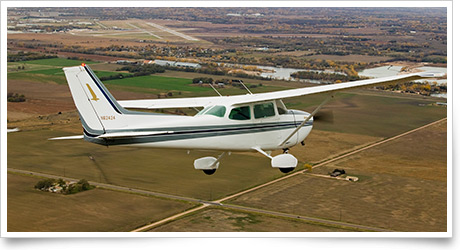training tipsCommitted to a takeoff
With room to spare on the runway, the student pilot discontinues the takeoff. Had there been any hesitation or uncertainty, it might have been too late for that.
Then what?
Unfortunately, you can read accounts of accidents that occurred when it would have been perfectly possible to continue the takeoff, fly the aircraft around the traffic pattern, and land normally. If a pilot has learned to correlate other sources of information confirming that the aircraft is performing as expected, a failed instrument is no big event.
Continuing the takeoff run, the pilot can sense the increasing speed and control responsiveness, despite the erratic instrument. With a gentle rotation to the takeoff attitude, the aircraft flies itself off. The pilot establishes the climb attitude—so familiar from many hours of pre-solo practice. With takeoff trim set, the pitch attitude should look and feel normal—another important cue.
Leveling off downwind, the pilot reduces power to the usual value, establishes the known pitch attitude, confirms level flight, and retrims. Setting known power and pitch (the sight picture) for the deceleration to flap-operating speed and for descending on base also will produce the expected results. Check the vertical speed indicator; it should indicate a normal descent rate. Tweak it with minor power changes if necessary, based on what you see outside.
Throughout the approach and landing, cues including power settings, the feel and responsiveness of the controls—even sounds—compensate for the missing airspeed information. Practice the exercise with your flight instructor, who will cover the airspeed indicator, perhaps letting you sneak a peek now and then to see how your airspeed estimates match the actual indications.
An important tip: Once you identify a failed airspeed indicator, eliminate it from your scan to avoid distraction, or cover it.
A blocked pitot tube on takeoff, followed by an unstable landing approach, led to the accident noted above. The National Transportation Safety Board commented that both the student pilot and instructor "reported that his flight instruction did not include operations simulating a loss of airspeed indication."
Be sure to practice failed-airspeed scenarios, thus avoiding that unfortunate outcome! training productsKing Schools introduce helicopter FIRCKing Schools has announced plans to release a new online helicopter flight instructor refresher clinic (FIRC) in the summer. The course, designed to run on an iPad or online, will include a paperless online renewal process. It will cost $99 without CFI renewal processing or $124.95 with processing. Revised airline cockpit manual releasedStephen Casner has released the second edition of The Pilot's Guide to the Airline Cockpit. The book introduces readers to the fundamentals of today's airline cockpit before entering training at an airline company. The print version is $24.95; the e-book PDF is $19.95.
Note: Products listed have not been evaluated by ePilot editors unless otherwise noted. AOPA assumes no responsibility for products or services listed or for claims or actions by manufacturers or vendors. final examQuestion: I'm a student pilot. Do I need to carry my logbook with me on my solo cross-countries?
Answer: Yes. As per FAR 61.51, student pilots are required to carry a pilot logbook, student pilot certificate, and any other record required under 61.51. These documents are required to be in the aircraft on all solo cross-country flights as evidence of the required authorized instructor clearances and endorsements. Here's a link to AOPA's subject report on logbooks.
Got a question for our technical services staff? Email [email protected] or call the Pilot Information Center, 800/872-2672. Don’t forget the online archive of “Final Exam” questions and answers, searchable by keyword or topic. |
 In the April 19
In the April 19 

